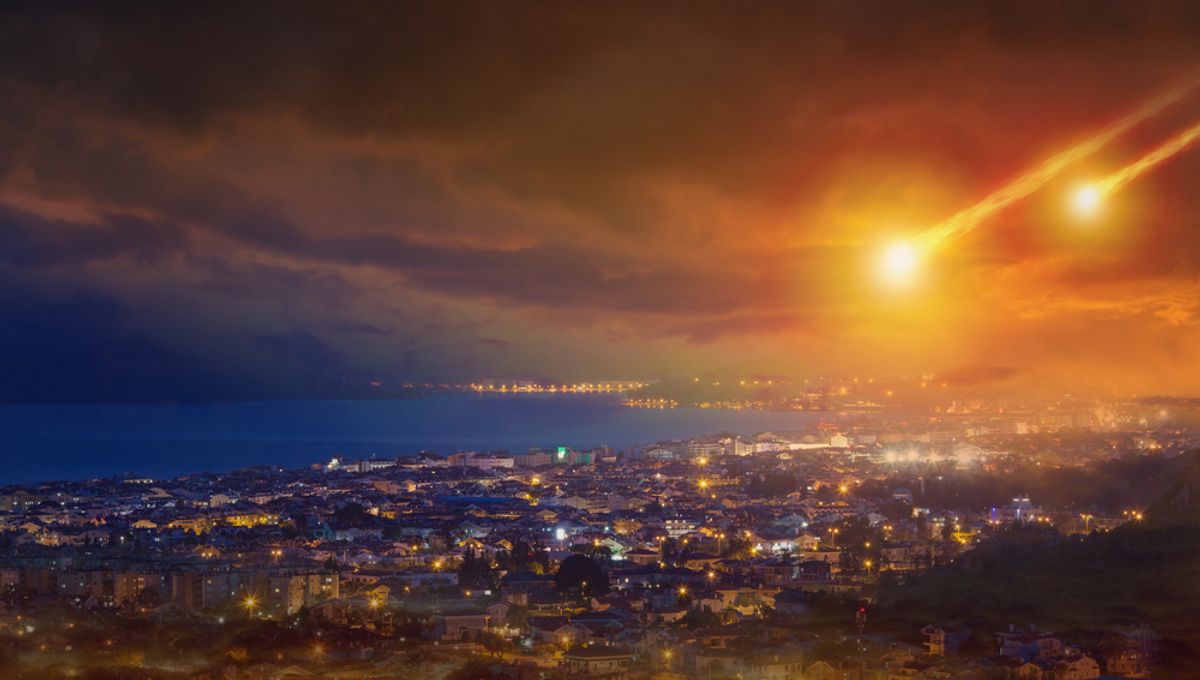
It seems that, when it comes to asteroids hitting our planet, people only have a binary response: not taking it seriously, and being terrified that it might happen at any moment. We ought to have a pragmatic attitude – it is important to not underestimate the threat without exaggerating it. Many organizations are keeping us safe by studying and cataloging hazardous objects. Plus, we could deflect one, as DART has demonstrated.
However, what would happen if one slipped through the net? Well, it very much depends on size, speed, and density. So far, only seven asteroids have been discovered and tracked before they collided with our planet. A very small number. On the positive, they were also discovered just hours before they burned in the atmosphere, which would give people enough time to move to safety if they were a risk.
But how far is safe enough? That also depends on the properties of the asteroid, but we can get a few historical examples that give us an idea of where it is safe to be. We’d be looking at city killers, objects that would destroy a city but not bring forth a mass extinction.
The most famous example is the Tunguska event. On the morning of June 30, 1908, a space rock – maybe an asteroid up to 60 meters (200 feet) in size – broke apart high in the atmosphere, releasing a huge amount of energy over the Podkamennaya Tunguska River in Siberia. The object flattened 80 million trees over an area of 2,150 square kilometers (830 square miles). At least two people are believed to have died, and maybe a third one.
The energy released by the event it is estimated to be between three and 30 megatons of TNT. That range includes some of the most powerful nuclear weapons ever tested, and you wouldn’t want to be near them. The safe area is probably 10s of kilometers from the epicenter of the impact. Using an asteroid impact calculator (that has a lot of caveats due to uncertainties), it suggests that within 10 kilometers (6.2 miles), all buildings would collapse. At 20 km (12.4 miles), only wood frame ones would, and by 30 kilometers (19 miles) glass windows will be shattered. This is roughly what is found by using the famous nuclear bomb simulator.
But does it match reality? Well, there are several eyewitness accounts as reported in English on Wikipedia which make for a fascinating read. One in particular by S.Semenov (recorded by Russian mineralogist Leonid Kulik’s expedition in 1930) describes how Semenov was thrown a few meters backward (that’s the sharp change in pressure from the impact), and then there was the hot wind. Semenov and his wife lived around 60 kilometers (41 miles) from the impact location. So 30 kilometers (19 miles) might have been enough to survive – but even at double the distance, you would be experiencing something extreme.
The impact that formed the Barringer meteor crater in Arizona was slightly smaller in size and yield than Tunguska, but it did excavate a one-kilometer-sized hole in the ground, killing animals in prehistoric America in a 6-kilometer (4-mile) radius and severely injuring more up to double the distance away.
Of the other notorious ones in popular culture, we need to talk about the Chelyabinsk event on February 15, 2013. The similarity with Tunguska is that it broke up in the atmosphere and it was over Russia. However, it was an event that released 75 to 60 times less energy than the 1908 event – in fact, the effect was much smaller. The asteroid itself was 18 meters (59 feet) across. While a large number of buildings were damaged, the 1,491 injuries (none of which were fatal) came from shattered windows.
However, the light of the impact was visible up to 100 kilometers (60 miles) away (like in the first sequence in the video above) so it is certainly possible to see these events in safely.
If an asteroid is known to be coming toward where you live, you ought to put as much distance between you and it as possible. Remember, light travels faster than the shock wave, so be ready to brace if you see the light from the impact.
Source Link: How Far Away Do You Have To Be To Survive A (Small) Asteroid Impact?